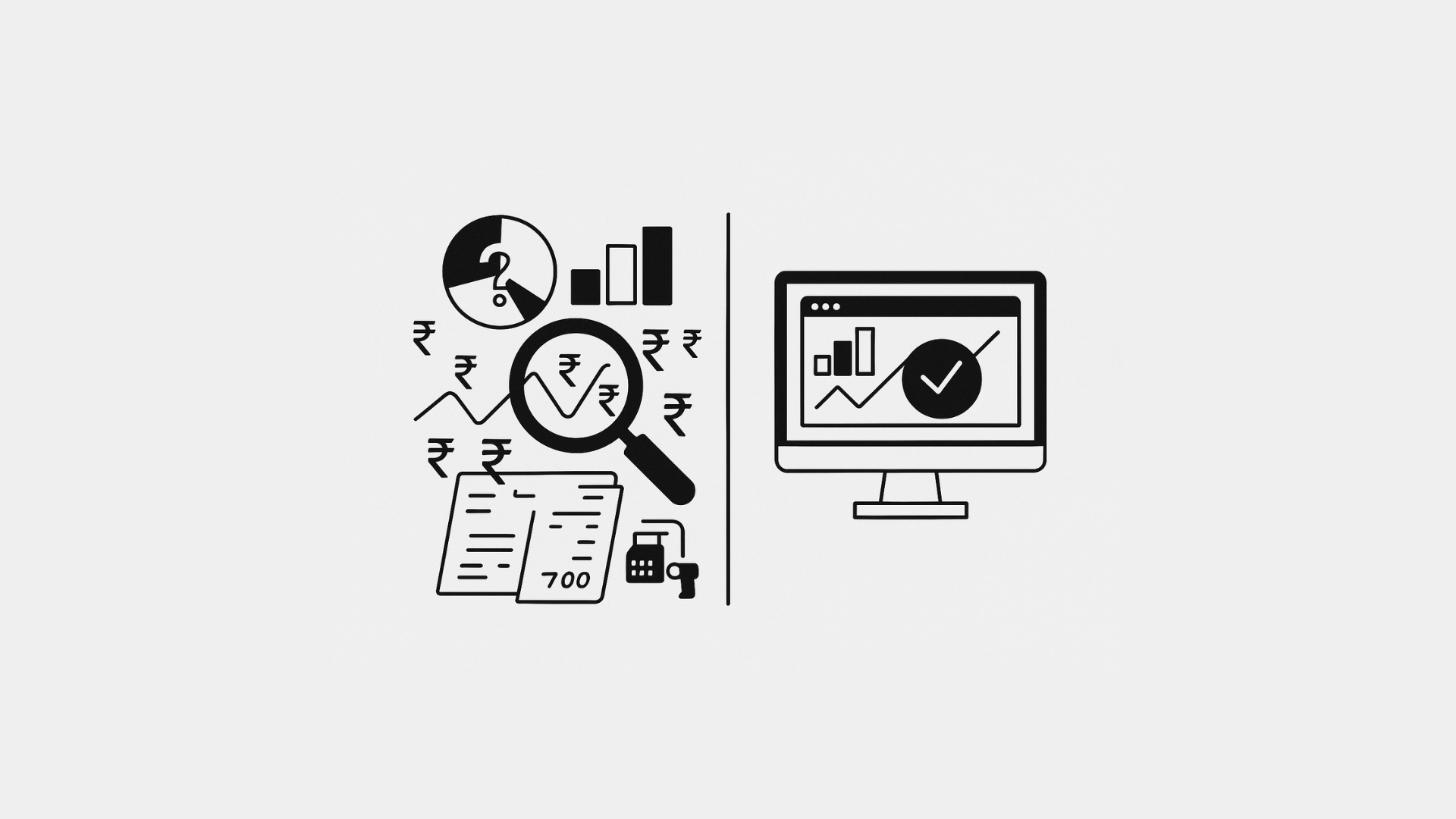In 2017, at midnight on 1 July, an indirect tax Goods and Services Tax (GST) was enacted in the Indian economy. It replaced many of the existing taxes levied by the central and state governments, such as excise, state sales tax / VAT, CST, entry tax. The main idea behind the introduction of GST is to bring uniformity in the tax-payment system and provide more transparency. This system has many positives for stakeholders and will create a better tax environment. In simple words-
- GST reduces distortions and enables all economic agents to respond more effectively to price signals.
- GST controls exchange rates and price levels violations and facilitates competitive advantages.
- GST based tax reform provides a real policy opportunity. It reduces the difference in tax bases of different States and reduces the costs of doing business.
Article Content-
- What is GST?
- What is GST Return Filling and Who should file GST Returns?
- Who should file GST Returns?
- What is GST Return Filling software?
- Features of GST software
- How GST solution helps in filing GST Returns
- Proposal of penalty for not filing GST return
- RetailGraph software is compatible with providing GST solutions
What is GST?
The Goods and Services Tax is known as GST in India. It is a comprehensive tax levied on the sale, manufacturing, and consumption of services and goods across the country. Also, it referred to as one of the biggest tax reforms in the country’s history. GST brings state economies together and improves the overall economic development of the nation.
Worldwide 160 countries have a GST tax system. It is a destination-based system; the tax is collected by the state where goods are consumed. In India, the GST system adopted the dual GST model where both states and central levies tax on Goods or Services or both. The GST is categorized into three categories:
SGST – State GST, collected by the State Govt.
CGST – Central GST, collected by the Central Govt.
IGST – Integrated GST, collected by the Central Govt.
The introduction of GST reforms indirect taxation in India. Single taxation mitigates the double taxation, cascading, a multiplicity of taxes, classification issues, taxable events, etc.
What is GST Return Filling and Who should file GST Returns?
All owners and dealers who have registered for the GST system are required to file GST returns by the type of business or transaction they are conducting.
A registered dealer or owner is required to submit GST returns under the GST that generally include:
- Purchases
- Sales
- GST output (On sales)
- Tax credit for input (GST paid on purchases)
Your sales, purchases, tax received on sales (output tax), and tax paid on purchases are all included in a GST return.
After submitting GST returns, you are responsible for paying the associated taxes.
Who should file GST Returns?
Under the GST regime,
- Typical businesses must file two monthly and one annual return if their combined yearly revenue exceeds Rs. 5 crores.
- The QRMP plan allows taxpayers with a revenue of up to Rs. 5 crores to file returns. Each year, QRMP filers must submit nine GSTR files, including four GSTR-1 and three GSTR-3B forms and an annual return.
- In certain circumstances, such as with composition dealers, who must file five GSTRs annually, separate statements or returns must also be filed.
Reasons why GST Returns Filing Software is Important for Businesses
- Seamless ERP integration
- Easy Return Filing
- Secure your business data
- E-Way Bill Implementation
- Easy E-Invoice Generation
- Smart Reporting
- Centralization of GSTIN(s)
- Data Reconciliation
What is GST Return Filling software?
Every business faced one of the most prominent business changes after independence in the form of Goods and Services Tax. Thus, the software development companies identified this future demand for doing business and developed software solutions, which is the best way to handle GST. In this way, GST software facilitates GST filing for businesses and provides a better way of filing returns on time.
Another robust advantage of using GST software is that it eliminates the challenges faced by accountants to file GST. Therefore, to avoid delays in tax payments, GST accounting software has now become common. It effectively complete return filing and compliance.
A good GST accounting software will enable taxpayers, accounting professionals, and business owners to create easily prepared invoices for GST, file GST returns, prepare GST reports, and manage their accounting data seamlessly.
Features of GST software
GST Ready Invoices
Taxpayers, who are registered themselves under GST, need to generate invoices as per the GST format. A GST compliant invoice includes the following details-
- Supplier’s and recipient’s GSTIN
- Taxes applicable under GST (like CGST, SGST, IGST, UTGST)
- HSN/SAC Codes
- GST Rates
A GST Billing Software enables taxpayers to create GST ready invoices quickly by following the particularized GST format. Also, the software enables taxpayers to schedule invoices for regular paying customers. Also, it sends reminders for outstanding payments, gets notifications for invoices viewed or paid by the recipients. These GST ready features of the accounting software enable them to collect payments on time.
GST Ready Reports
As per the GST filing procedure, taxpayers need to file monthly, quarterly, and annual tax returns. The GST software ensures that returns are to be filed in the format as specified in the GST law. The software allows accounting professionals to import accounting data from their excel sheets and generates reports.
ITC Match/Mismatch Reports
As per the GST regime, suppliers, who file their taxes periodically, are allowed to claim ITC in respect of GST paid on inward supplies. The GST software facilitates taxpayers to correctly calculate input tax credit through the ITC match/mismatch report.
Auto Calculation of Taxes
GST software helps taxpayers to calculate tax liability automatically. The software does this by finding the correct applicable GST rates. This software facility ensures taxpayers that the tax payable is calculated correctly. It also makes timely payment of taxes without any errors.
HSN/SAC Code Lookup
A registered person under GST has to specify the relevant HSN / SAC code for the goods or services being supplied by him. Thus, manual handling of such huge items is a challenge, which is solved by good GST software.
Data Security
It is one of the most important features of GST software. It is because the software saves the critical information of customers and vendors. The misuse of the information leads to loss of money, effort, and time. A good GST Software having proper security standards helps the taxpayers to get rid of such security issues.
Cost-Effective
The cost of GST software is another concern in the purchase decision of the software. Thus, you must first understand your business need and your budget to purchase software to meet the needs of the business. GST mainly automates all taxation procedures and saves time & money.
Third-Party Apps
To choose the right GST solution, you should be aware of the fact that your software is not integrated with other software. It enables taxpayers to perform various types of tasks such as payroll management, inventory management, etc. in one place.
Customer Support
The GST regime requires taxpayers to manage many forms for filing returns, claiming refunds, etc. Thus, users who have no idea or little idea about working on GST software need excellent customer support.
How GST solution helps in filing GST Returns
Businesses of any size- small, medium, or large need a comprehensive GST software solution to maintain the business systematically. The GST software is meant with the understanding of GST guidelines under the government rules.
All the taxpayers registering for GST are required to file GST returns. GST return consists of a set of documents that contain details of the income of a taxpayer. There is no point in whether your business has made any sales or purchases during the return filing period.
To file GST Return online, taxpayers have 19 GST file return options. These options are depending on the GST registration of taxpayers and the nature of transactions. Each GST return option has its purpose and due dates, within which taxpayers have to file their returns. If the GST return is not filed within the time, then you will be liable to pay interest and a late fee.
Primarily, businesses are required to file three types of GST returns per month – GSTR-1, GSTR-2, and GSTR-3.
GSTR -1
GSTR-1 is a monthly or quarterly return that every registered dealer has to file. It contains details of all external supplies. It allows the buyer to make any changes in case the auto-populated purchase information doesn’t match. The return has a total of 13 sections.
The GSTR-1 form is filed on the 11th of the following month. The due dates for GSTR-1 are based on your turnover. Businessmen with sales up to 1.5 crores have the option of filing quarterly returns. And, taxpayers with sales above 1.5 crores have to file monthly returns.
GSTR-2
GSTR-2 contains details of all the purchase transactions of a registered dealer for a month. This form has to be filed by every registered taxpayer to give details of their purchase.
The due date for filing GSTR-2, GSTR-2 is the 15th of the following month. Here, you get a 5-day difference between the GSTR-1 and GSTR-2 filings to correct any errors and discrepancies.
GSTR-3
GSTR-3 will show the amount of GST liability for the month. It is a monthly return with the summarized details of sales, purchases, sales during the month along with the amount of GST liability. This return is auto-generated pulling information from GSTR-1 and GSTR-2. Also, It contains information on the amount of tax paid under SGCT, CGST, and IGST, and more.
As per the 22nd GST Council meeting of 6th October 2017, businesses with annual turnover up to 1.5 crores will submit quarterly returns. Taxes will be paid quarterly. The due date for the GSTR-3 form is by the 20th of the next month.
Proposal of penalty for not filing GST return
hen taxpayers fail to submit returns within the given due dates, they are liable to pay penalties for the late filing of GST returns. As per the rule, the late filing of the form charges 18 percent per interest on your total taxable amount. This interest will be charged from the next day of the due date to the date of the tax.
Thus, it is necessary to have such GST software that alerts you about your GST filing. It also performs all the tasks related to GST automatically and saves taxpayers and accountants form unnecessary chaos.
RetailGraph software is compatible with providing GST solutions
RetailGraph software is a leading name in the field of retail, wholesale, and distribution businesses. It comes with a complete package with a robust GST solution. If you’re a taxpayer and find it difficult to file GST return in your software, choose RetailGraph that fulfills all your requirements and also within your budget.







